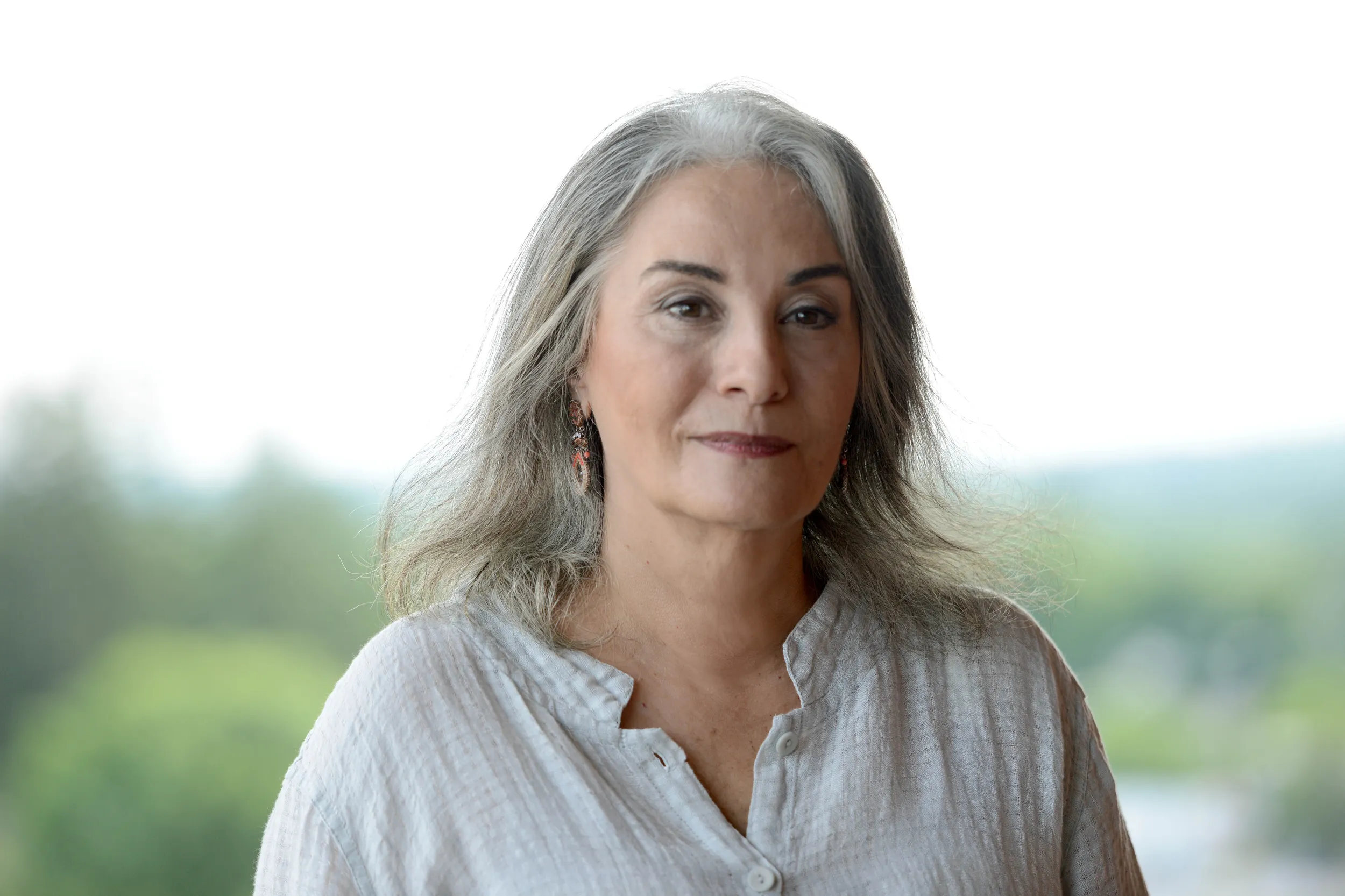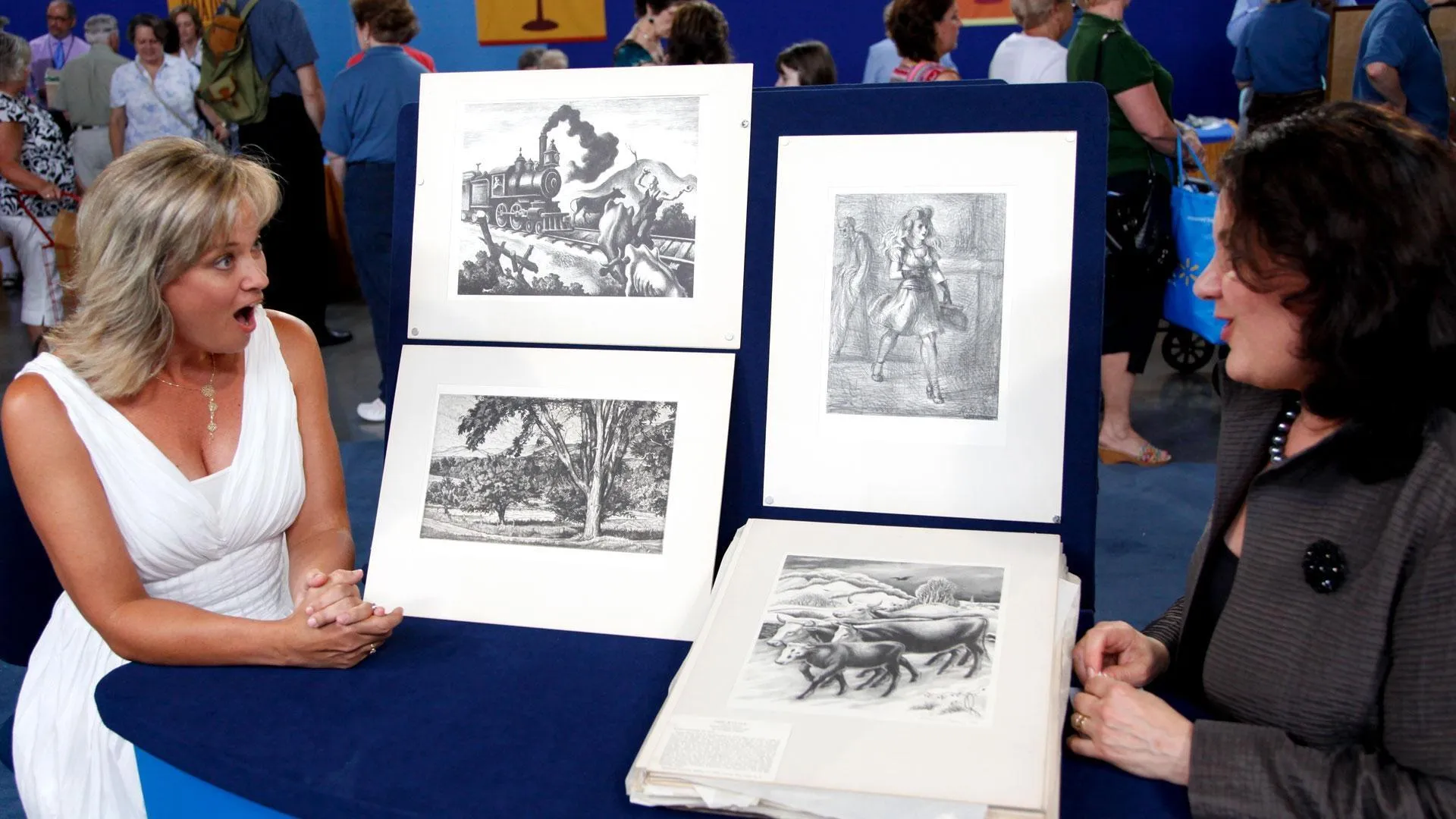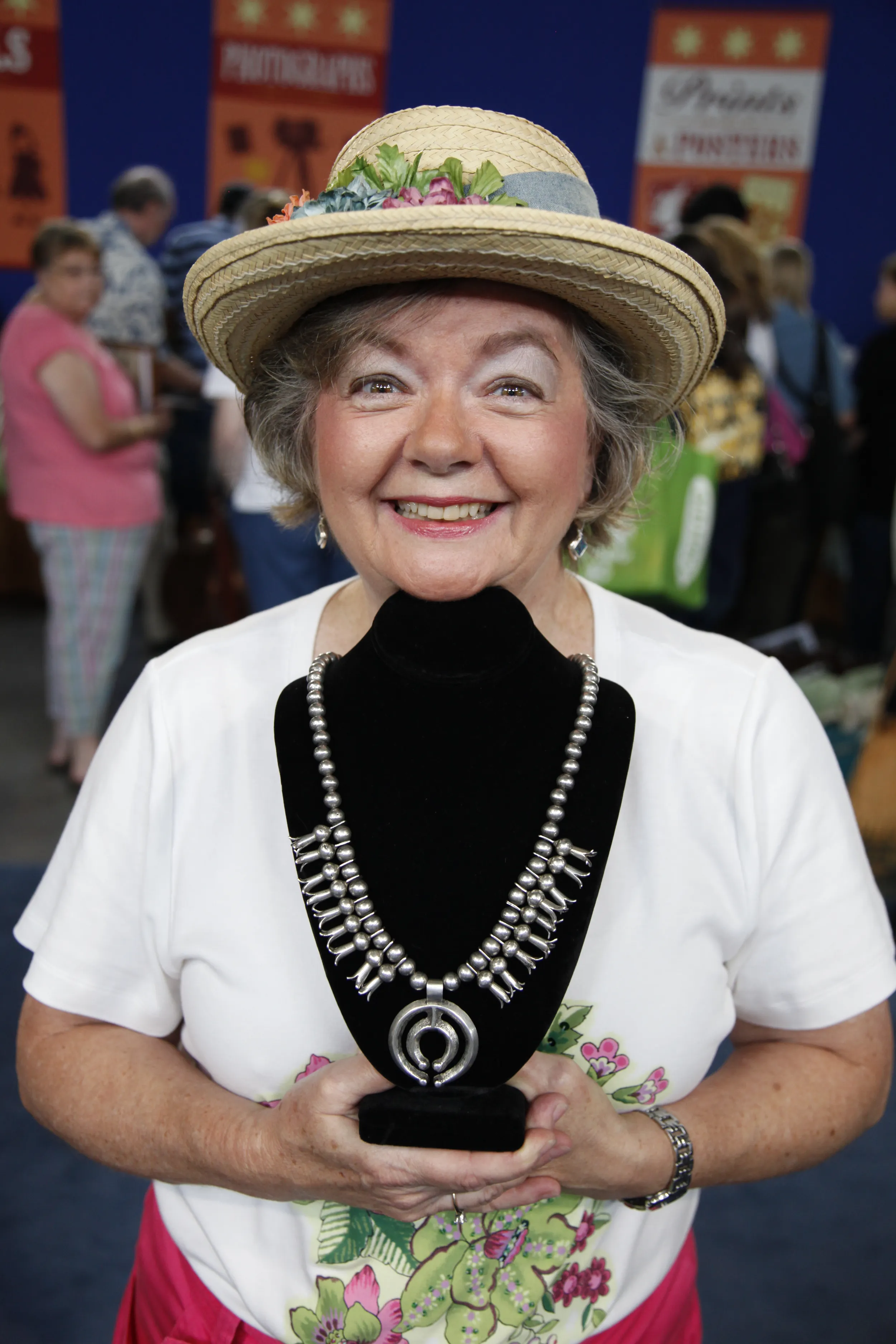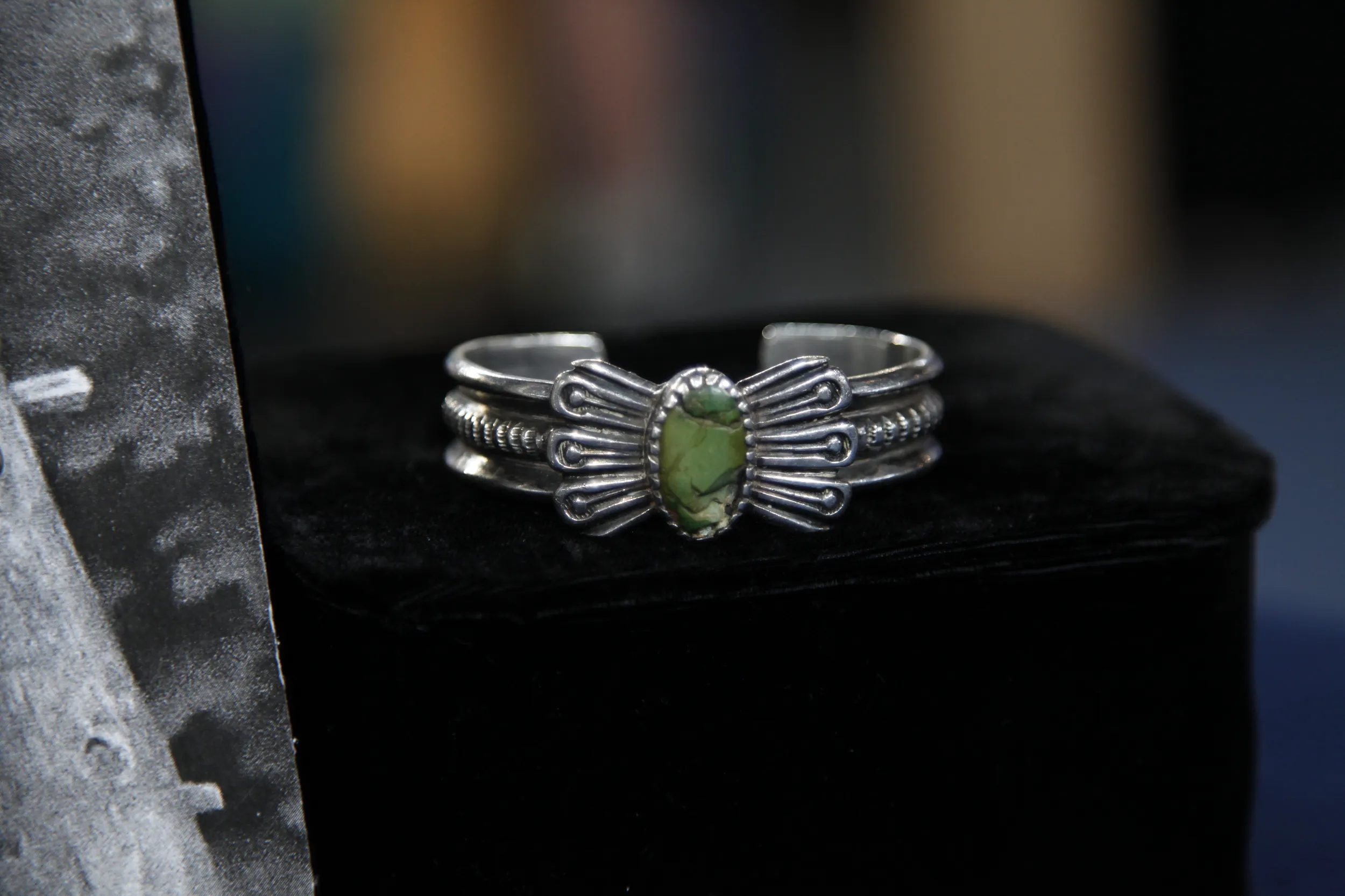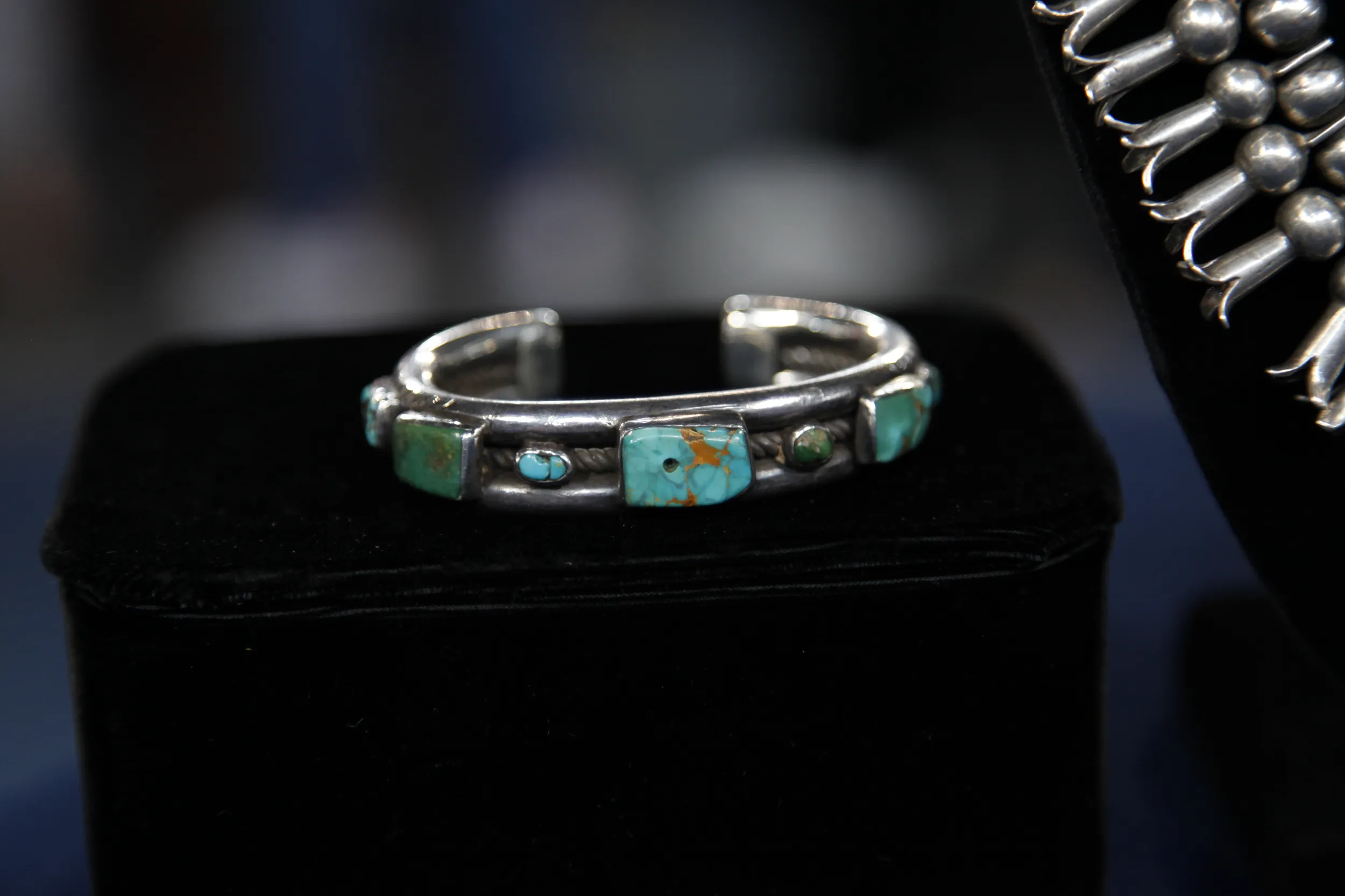GUEST: The woman in the photograph is my husband's grandmother. And her husband was the lawyer for the Santa Fe Railroad. They lived in New York, and they would go to Santa Fe every year for him to work. He worked for the railroad, and he also worked with the Navajo people. And they collected these pieces of jewelry, as well as some pots and some rugs. But what I brought here are just a few of the pieces that, that she had collected.
APPRAISER: Now, this photograph almost has a contemporary feel to it, but you tell me it dates to when?
GUEST: It dates to the 1930s.
APPRAISER: Okay.
GUEST: And most of these pieces they purchased probably in the '30s.
APPRAISER: What was exciting for me to see about this particular type of jewelry is, the majority of things that we see here on the ROADSHOW in terms of Navajo jewelry was created for the tourist trade. Things, as they started to open up the railroads, and things as they opened up the highways in the '30s. These items pre-date that, and they have wonderful character. And it's absolutely delightful to see a photograph where you can actually see where they were being worn. The silver that created these bracelets was melted-down ingots from Mexican coinage. They are traditional-format. They're considered historic. This is historic Navajo jewelry. You can see that the stones in them were actually taken from necklaces. So those small holes that you see in the stones show that. The necklace over there is a squash blossom. Very traditional format from the Southwest. Again, just a beautiful example. This woman either had a great eye or just happened to be in the right place. The long beaded necklace, all handmade beads. So if you were to price these pieces out, which would you think would be the most expensive of them?
GUEST: I, I would say the squash blossom necklace, but...
APPRAISER: Have you worn these things yourself?
GUEST: Yes.
APPRAISER: They were made at the time period they were collected, so they're early 1910s to 1930s. The squash blossom has a value on today's marketplace of about $1,800. The handmade silver beads, again, they're quite beautiful, $1,000. These bracelets are extraordinary. This is what I wanted America to see.
GUEST: (chuckles)
APPRAISER: Because, really, I mean, we see such... such pedestrian pieces a lot, and I know they're loved by people, but this is what America needs to see. This is the beautiful, beautiful craftsmanship. The Navajo were taught how to make silver in the 1860s, and moving through in their own tradition, this was it. This was the height of it. So these beautiful bracelets are worth, on today's marketplace, about $3,000 each.
GUEST: Ooh-- my.
APPRAISER: Will you be wearing them frequently?
GUEST: Yes.
APPRAISER: Good. Because they really... I mean, they just get better and better with age.
